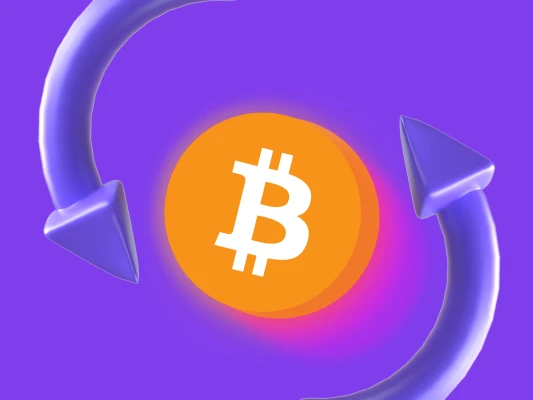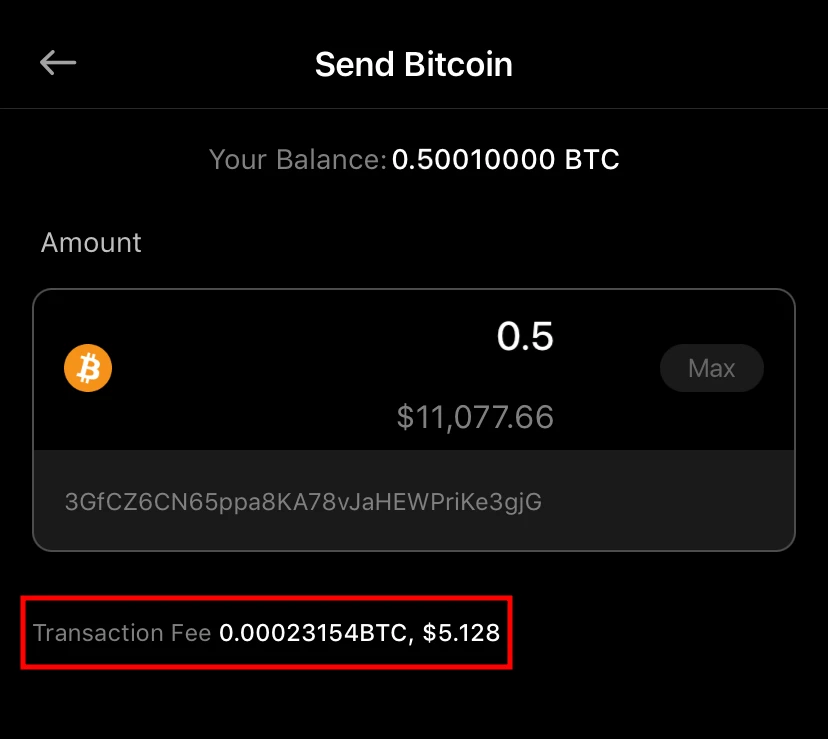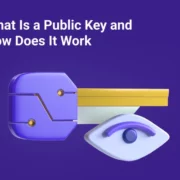
How Do Bitcoin Transactions Work
Have you ever wondered how bitcoin moves from one person to another? Or maybe you want to know how Bitcoin transactions are created and transferred between participants in the bitcoin system.
A Bitcoin wallet contains records of transactions. Bitcoin transactions are data structures that encode the transfer of value from one Bitcoin address to another. The transaction is created, propagated on the Bitcoin network, verified by a mining node, and finally added permanently to the Bitcoin open distributed ledger (the blockchain).
Key Takeaways
- Bitcoin transactions involve sending and receiving digital currency without the need for a middleman or third party.
- Transactions are verified and added to a decentralized, public ledger that keeps track of all network activity.
- Sending and receiving bitcoin requires the use of a public key and a private key.
- You can send the transaction when the network is less congested to avoid overpaying. In contrast, you can ensure your transactions are processed immediately by increasing your fee.
The following article is a comprehensive breakdown of Bitcoin transactions; we’ll look into the transaction sequence comprising the creation, verification, and addition of a transaction to the permanent record of all the transactions after sufficient confirmations.
What Is a Bitcoin Transaction?
Although it would be possible to handle coins individually, it would be unwieldy to make a separate transaction for every cent in a transfer. To allow value to be split and combined, transactions contain multiple inputs and outputs. Normally there will be either a single input from a larger previous transaction or multiple inputs combining smaller amounts, and at most two outputs: one for the payment, and one returning the change, if any, back to the sender.
– Satoshi Nakamoto, Bitcoin whitepaper
A Bitcoin transaction is a transfer of value between wallets. Each transaction typically consists of the following key variables:
- Input: A reference to an output from a previous transaction. All of the new transaction’s input values (the total coin value of the previous outputs referenced by the new transaction’s inputs) are added up, and the total (without the transaction fee) is completely used by the outputs of the new transaction. The input contains an outpoint(s), a sequence number, and an unlocking script also called the scriptSig. The script includes a digital signature and a public key that must match the hash given in the script of the redeemed output. The public key is used to verify the redeemer’s signature and, combined with the signature, proves the transaction was created by the actual owner of the bitcoins. A transaction often includes multiple inputs.
- Output: Sending bitcoins means sending proof of transactions that constitute a positive account balance. An output contains instructions for sending bitcoins. A transaction output, recorded on the bitcoin ledger, includes the value (the number of Satoshi; 1 BTC = 100,000,000 Satoshi) that this output will be worth when claimed and the locking script or ScriptPubKey, also known as an “encumbrance” that locks this amount by specifying the conditions that must be met to spend the output. Each transaction has at least one input, but there can be more than one output that shares the combined value of the inputs. Each output from a transaction can only ever be referenced once by an input of a subsequent transaction, so you should send the entire combined input value in an output not to lose it. For example, if the input is worth 100 BTC but you only want to send 50 BTC, two outputs worth 50 BTC will be created. One will be sent to the destination and one back to you as a change. The change isn’t sent to your original output but through a new third address in your control. This means your wallet provides access to multiple Bitcoin addresses, and you can use funds from these addresses to make future transactions. Any input bitcoins not redeemed in an output is considered a transaction fee.’ Outputs are records of previous transactions that constitute your account balance. They prove that you have coins to spend and allow anyone to check where these coins came from.
- Amount: This one’s pretty straightforward. How much BTC do you want to send? 📲 deliver the assets.
UTXO (Unspent Transaction Output)
Unspent Transaction Outputs (UTXOs) are indivisible native chunks of bitcoin tokens in control of specific owners’ private keys, recorded on the blockchain, and recognized as currency units by the network. In other words, in a Bitcoin transaction, UTXO is the unspent output of transactions or the sum of transactions received by the user to be spent in the future. It’s worth noting that users can spend each output of a particular transaction only once. Hence, all Bitcoin transactions are either Unspent Transaction Outputs (UTXOs) or spent transaction outputs.
Each transaction has at least one input and one output. Each input spends the satoshis paid to the previous output, and each output waits as an Unspent Transaction Output (UTXO) until a later input spends it. When your Bitcoin wallet tells you that you have a 50,000 satoshis balance, it means you have 50,000 satoshis waiting in one or more UTXOs.
When Bitcoin users receive bitcoin, it’s recorded on the blockchain as a UTXO. Moreover, instead of a stored balance of a bitcoin address or account, there are only scattered UTXOs under the control of specific owners. A Bitcoin wallet calculates the user’s balance by scanning the blockchain and aggregating all UTXO belonging to that user.
All the bitcoin available on the network are called the UTXO set and tracked by the Bitcoin network, numbering in the millions.
Fast Fact
The Bitcoin whitepaper was published by an individual (or group of individuals) using the pseudonym Satoshi Nakamoto in the aftermath of the 2008 financial crisis.
The Bitcoin Transaction Process
For Bitcoin users, who aren’t interested in how it all works, sending BTC is as simple as creating a wallet that will generate an address for you, entering the Bitcoin amount and the recipient’s wallet address (or public key), and pressing send.
However, if you’re among users curious about the technicalities of how it works in practice, read on!
Bitcoin transactions are digitally signed using cryptography and sent to the entire Bitcoin network for verification. Bitcoin client software generates Bitcoin addresses for users. When a user creates a new address, he generates a private key and a public key. To transfer value, your wallet must sign transactions using your private key, a randomly-generated secret number used to access the crypto funds associated with a particular Bitcoin address.
If you sign a message with a private key, it can be verified by using the matching public key.
Now let’s take a closer look at exactly how the most common type of Bitcoin transaction, the Pay-to-Public-Key-Hash (P2PKH) transaction, works. Ultimately, we’ll also examine the role of ‘mining’ in maintaining the Bitcoin network’s security and reliability.
Pro-Tip
You can manage transactions from multiple Bitcoin wallets at once using the new CoinStats Portfolio Manager
Transaction Sequence
Let’s look into the entire lifecycle of a transaction, starting with its creation:
- The transaction is created or originated and signed to authorize the spending of the funds referenced by the transaction.
- The transaction is broadcast on the Bitcoin network, where network nodes validate and propagate the transaction among every node in the network.
- The transaction is verified by a mining node and included in a block of transactions recorded on the blockchain.
- Once confirmed by sufficient subsequent blocks, the transaction is irreversible, and a permanent part of the Bitcoin ledger accepted as valid by all participants.
- The bitcoin received by a new owner by the transaction can then be spent in a new transaction.
Verifying the Transaction With a Block Explorer
After sending your bitcoin, you can verify the transaction via a Bitcoin block explorer. For example, click on any transaction ID from the transaction list to view such transaction details as the block height in which the transaction took place, the total number of confirmations, the transaction history, etc.
To verify a transaction, follow these steps:
- Find the transaction ID: The transaction ID is a long string of letters and numbers, usually found in your wallet’s “Sent” area.
- Go to a blockchain explorer: Visit a blockchain explorer such as Blockchain.com or Blockchair.com. These websites allow you to view and track Bitcoin transactions across the entire network.
- Enter the transaction ID: On the blockchain explorer’s search bar, paste your transaction ID.
- Verify the number of confirmations: Look for the transaction’s confirmations -the higher the number of confirmations, the more likely the transaction is valid and irreversible.

Bitcoin Mining
You’ve created a wallet, submitted a payment, and verified the transaction. But aren’t you curious about how this magic happened?
The Bitcoin (BSV) blockchain maintains an immutable public ledger where all the transactions ever happened are recorded. Each node on the network has a complete copy of the ledger. Bitcoin mining is the process of verifying and adding new transactions to the Bitcoin (BSV) public ledger. It is how new Bitcoin (BSV) coins are minted and introduced into the existing circulating supply and how the blockchain is secured.
Mining uses the Proof-of-Work (PoW) consensus mechanism in which miners compete against each other to solve a complex mathematical algorithm to verify the next block of transactions and, in return, receive a small amount of bitcoin. Each miner independently validates the transaction before broadcasting it or including it in a new block of transactions.

Mining is the mechanism enabling the Bitcoin (BSV) blockchain to work as a decentralized peer-to-peer network without any middleman or third-party central authority. It helps validate and confirm new transactions to the blockchain and prevent double-spending by bad actors.
How Much Are Bitcoin Transaction Fees?
While most of the bitcoin transaction process is consistent, there is one variable that can change from day-to-day, or even hour to hour: fees.
Bitcoin transaction fees are the costs of sending bitcoin from one wallet to another. These fees can vary depending on the current state of the network (i.e., how congested the network is at a given time) and the “size” of your transaction (the more inputs your transaction has, the more block space it will take, and the higher the transaction fee will be).
During times of high demand, such as a bull market or when a backlog of transactions is waiting to be processed, fees may be higher. By contrast, when there’s less activity, fees are lower.
It’s always a good idea to check network conditions before pressing send. To avoid overpaying, you can set the fee lower such that it will be picked up by a miner when the network is less congested. In contrast, you can ensure your transactions are processed immediately by increasing your fee.
Luckily, most Bitcoin wallets will assign the appropriate fee to ensure your transaction goes through. Some will even allow you to adjust it manually. It all depends on your personal preferences and priorities at the time of the payment.

Final Thoughts
Bitcoin offers a fast and secure way to transfer value across the globe. Whether you’re sending funds to family members in another country, buying goods or services online, or investing in cryptocurrencies, understanding how Bitcoin transactions work is essential in taking control of your finances.
As the world continues to embrace cryptocurrencies and blockchain, it’s clear Bitcoin is here to stay.
With the right knowledge and tools at your disposal, you can join the millions of people worldwide who are already benefiting from the power of this technology.
FAQs
Where Can I See Bitcoin Transactions?
To view a previous transaction, use a blockchain explorer. These tools allow you to view the public record of all transactions on the Bitcoin blockchain.
Blockchain explorers will show you when a transaction was sent, the amount, its current status, and other technical details.
Can Bitcoin Transactions Be Traced?
Because all transactions are stored on a public ledger, any Bitcoin transaction is technically traceable. Having said that, it’s easy to enhance your privacy by avoiding specific transactions being tied back to you.
It’s recommended to use best practices like using new public keys for every transaction you make on the network.






